We need to understand how the healing with entheogens happens to know what parameters are needed when considering a place to heal.
Healing with entheogens comes when one surrenders to a healing process that allows participants to have an encounter with their higher self and are able to open their universe without judgement. Healing will come as a realization and sometimes not necessarily during ingestion of the entheogen itself.
The master plants and entheogens have biochemical compounds that can help manage symptoms and can bring wellbeing as mere ingestion. If the participant is seeking to heal a condition/wound/trauma, they need to have the willingness to delve within to understand the underlying cause and that will bring balance to their life.
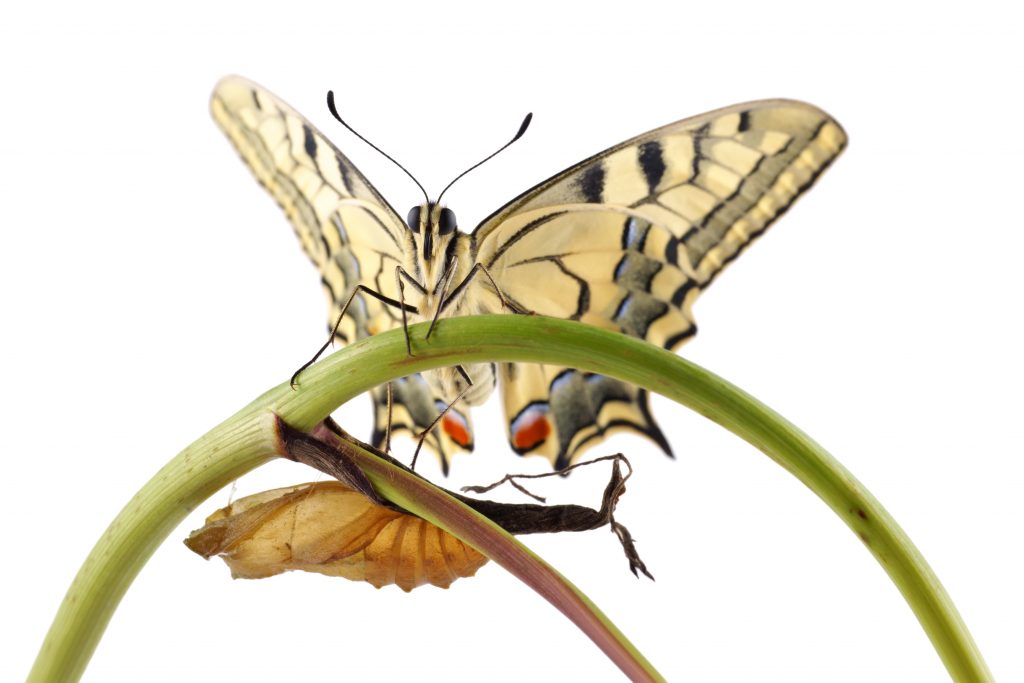
Healing through entheogens and master plants brings the opportunity of transforming suffering into growth and wisdom if it’s done in a therapeutic/sacred context.
There are many places around the world that offer instant spiritual healing retreats, spiritual enlightenment or magical journeys through the cosmos, trying to make a quick buck after consecutive nights, up to a week of drinking an entheogen like Ayahuasca. Part of the problem, “more is better” or the “quick fix solution” are concepts that the Western world has promoted as valid in medicine.
Sometimes when trying to find a safe place to experience the healing and sacred powers of entheogens, people mistakenly put value on the following:
- How many sessions for the time and money?
- The cheapest place with more good reviews
- Trying to find an authentic/genuine experience with “real” shamans
None of those are accurate parameters to evaluate if the place is a right fit. It’s not the amount of sessions that will bring the most healing. It needs to be understood that the cycle of most entheogens in the body is usually from 3 to 5 days. Meaning that by doing any of them consecutively, will create a certain tolerance, which will lead to a lower effect in the body or worse, an overdose that can lead to Serotonin or Dopamine syndrome sometimes causing permanent psychological damage. By taking this into account, we can safely say that one needs to wait a sufficient time between sessions.
It’s more useful to have one significant session that allows the participants for certain clarity, realization and integration to take place. This makes the entire journey a healing process that brings comprehension/healing; rather than doing many sessions that only raised more questions and confusion, which can make it a very intense psychedelic trip with little or no real meaning in the participant’s life.
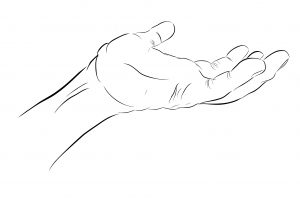 It’s the quality of preparation and depth of each session that will make the difference on how much healing/comprehension one could reach. The amount of energy invested in the preparation for each session, determines the amount of energy that is received from the overall experience. The more energy given/offered before a session, will only enhance the depth and intensity of a session with any entheogen.
It’s the quality of preparation and depth of each session that will make the difference on how much healing/comprehension one could reach. The amount of energy invested in the preparation for each session, determines the amount of energy that is received from the overall experience. The more energy given/offered before a session, will only enhance the depth and intensity of a session with any entheogen.
When it comes to preparation: Not only the dietary restrictions that are required in order to surrender and purifies oneself are needed prior to entheogenic and master plant consumption. The process of purging with emetics like Tobacco, Yawarpanga, Rosa sisa or energy cleansers like Kambó serves to purify and align the inner temple to receive the inspiration of the divine. The pilgrimage that the participant undergoes through the act of sacrifice is a necessary step when entering the divine dimension of the gods. Without purging/sacrifice, there is no free/open space for comprehension/insights to take part. Without purging first, it is like asking before giving.
So the question is not, how many sessions for how much money? The right questions are:
- How many days of preparation for each session? Are they in isolation/silence or in a group/sharing?
- What type of food is served/required during the process?
- How many and what type of purges before each session?
The previous questions are answering the amount of energy/sacrifice/offering that is giving before each session, which has a direct influence on the level of depth, intensity and transformation one might receive not from the session with the entheogen itself, but from the overall healing process.
When it comes to choosing the cheapest place with best review: We need to consider that the cheapest does not mean that the healing center is not doing it for the money. Those places usually offer sessions with groups of 30 to 50 + people per week making lucrative profits out of short retreats with little or no guidance. In contrast, there are other healing centers that only receive 3 up to 7 people at a time and charge thousands of dollars. Those may seem very expensive, but are usually specialized in treating specific conditions. They can make custom mande treatments for each unique case and deliver more emphasis and attention to each individual participant that cater to the needs to support their healing journey.
The following questions can give participants an idea of the level of attention, privacy and quality of support given from the healing center:
- How many people are treated at the same time?
- The accommodation and bathroom are private or shared?
- How many guides/facilitators/shamans are in the center?
- How many people are treated by each guide/facilitator/shaman?
- What type of experience/training do the facilitators/guides/shamans have?
When it comes to “real” shamans: usually the western world identifies them for their ethnicity, family lineage, training and their physical image. Claiming to be a shaman because of family heritage is absolutely absurd. It’s like saying because someone was a heart surgeon, anyone in his lineage can perform an open heart operation. Another mistake is putting emphasis on the physical look of a shaman which include the use of extravang customs and even using native ethnicity as a supposed prerequisite in order to be considered authentic/genuine. This is what has caused an immense proliferation of “Native Shamans” offering Ayahuasca for tourists in the past years throughout the amazons and the world.
A shaman is a state of consciousness that is reached over life times of spiritual development. It’s not the capacity to see the subtle world or to connect with entities. Any being with heightened sensitivity possesses that capacity and does not qualify them to guide others. A shaman is referred to a state of consciousness that is more closely to the term Samadhi* in Sanskrit.
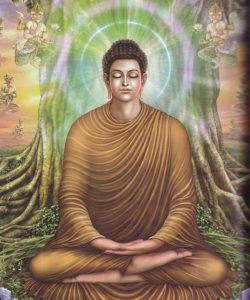 Samadhi समाधि – səˈmaːd̪ʱi
Samadhi is derived from the Sanskrit, sam, meaning “together with,” “completely,” or “perfectly,” a, meaning “near to” or “all around” and dha, meaning “put.” Perfect union of the individualized soul with infinite spirit. (1) A state of oneness; complete absorption. (2) Samadhi, which literally means “to direct together,” is the state in which the yogi perceives the identity of his soul as spirit. (3) It is an experience of divine ecstasy as well as of superconscious perception; the soul perceives the entire universe. (4) In other words, human consciousness becomes one with cosmic consciousness. (5) The soul realizes that it is much more than the conditioned body. (6) Christian saints have previously described this experience as “mystical marriage,” in which the soul merges into God and becomes one with Him. (7) Although human consciousness is subject to relativity and dual experience, samadhi is the state in which experience is whole, infinite, and single.
Samadhi समाधि – səˈmaːd̪ʱi
Samadhi is derived from the Sanskrit, sam, meaning “together with,” “completely,” or “perfectly,” a, meaning “near to” or “all around” and dha, meaning “put.” Perfect union of the individualized soul with infinite spirit. (1) A state of oneness; complete absorption. (2) Samadhi, which literally means “to direct together,” is the state in which the yogi perceives the identity of his soul as spirit. (3) It is an experience of divine ecstasy as well as of superconscious perception; the soul perceives the entire universe. (4) In other words, human consciousness becomes one with cosmic consciousness. (5) The soul realizes that it is much more than the conditioned body. (6) Christian saints have previously described this experience as “mystical marriage,” in which the soul merges into God and becomes one with Him. (7) Although human consciousness is subject to relativity and dual experience, samadhi is the state in which experience is whole, infinite, and single.
In this new age trend, considering a facilitator/guide to be a Shaman is not accurate also. The facilitator is merely making the experience accessible but does not grant any type of safe outcome. They can offer a safe experience biochemically speaking at most if they had sufficient training, but can’t offer safety in the subtle world and are not prepared to deal with any serious spiritual emergencies.
In comparison, a spiritual guide has done previous serious healing work on themselves, which in the case of working with master plants and entheogens, requires at least 3 to 5+ consecutive years living in the jungle doing hundreds of purges and dozens of “dietas/isolation” integrating the energies of the plants. It is said that a person needs to have done at least 150+ accumulative days in isolation with master plants to be considered ready to guide any type of isolation process or session.
The opportunity to be a guide requires many years of service, usually attending a teacher/master with the healing process of many people and learning through each specific case. After many years of learning through hundreds of different cases, a person can lead others where they have reached in their own spiritual development. Guides can offer a certain protection in the subtle world, limited to their own understanding and level of suffering. They can only take others as far as they have reached and are prepared to deal with emergencies as much experience they have had assisting and guiding healing processes in the past. There is no course or diploma that can grant this, only experience and personal/spiritual development.
The consideration is not necessarily to seek a genuine shaman for healing a specific condition with entheogens. If and when a person is blessed by meeting a real shaman, this will be due to a karmic encounter when a person is genuinely seeking to reach in what in Sanskrit is referred to mukti/moksha* and has the willingness to let go of everything to attain ultimate freedom. A shaman is someone with direct connection to the Divine, usually living a life of service and renunciation. They guide others towards their own personal freedom and will always be centered in devotional service towards a Higher Power. They are usually in a state of peace, joy and compassion, with little or no reaction to life’s circumstances whatsoever, giving no power to any external stimulation over their emotional balance.
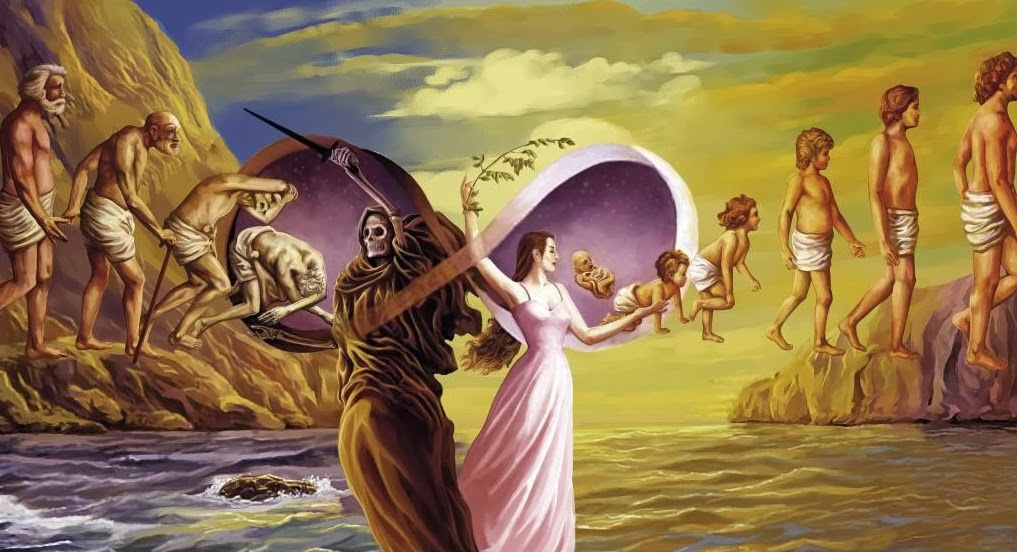
Moksha (/ˈmoʊkʃə/; Sanskrit: मोक्ष, mokṣa), also called vimoksha, vimukti and mukti,[1] is a term in Hinduism, Buddhism, Jainism and Sikhism which refers to various forms of emancipation, enlightenment, liberation, and release.[2] In its soteriological and eschatological senses, it refers to freedom from saṃsāra, the cycle of death and rebirth.[3] In its epistemological and psychological senses, moksha refers to freedom from ignorance: self-realization, self-actualization and self-knowledge.[4] To reach the state of moksha is to attain absolute freedom, peace and oneness with the Divine. Moksha is similar to the Buddhist concept of nirvana. The terms are often used interchangeably; however, Hindus believe nirvana is the state a person enters into after achieving moksha.
The consideration to find someone trustworthy and capable when it comes for healing specific conditions with master plants, is to seek a professional guide/therapist that has done serious spiritual development and has considerable experience guiding similar cases. Is also important to feel the trust in the guide/therapist as the participant’s heart will be exposed and will leave most people in a vulnerable state. It’s recommendable to have a prior conversation with the guide/therapist to understand their level of preparation and expertise. It’s always good to ask the rate of success of people that have heal under their guidance with similar conditions. There is a need of transparency during the entire process and will be important that the participant and the guide/therapist can communicate efficiently, preferably having direct communication with no translator in between.
Now if one truly finds a real shaman, words and translation will not be needed.
12 Key Elements to Consider Before Choosing Where to Heal with Entheogens
Throughout my own experience guiding and assisting healing processes for the last 8 years, it’s evident that a single experience with Ayahuasca or any entheogen by that matter, can be safely and properly done going through a sacred healing process of at least 4 to 5 days. Process in which there has to be a structure of privacy, discipline, effort and silence for the participant to reach a level of confrontation with their own self in order to bring any type of comprehension and healing through the experience. To heal serious conditions/traumas/addictions there is a need of longer healing processes that usually require no less than 1 month and can go up to 12 months depending on the background and current state of each participant.
Silence/Confrontation
When it comes to seek a confrontation with one self, silence is king. If one is seeking to heal through an entheogen, it’s elemental that the person understands that the answers lie within themselves and the entheogen is serving as a vehicle to explore the vastness of the self. Participants need a healing structure that forces them to go within and confront themselves considering that the western world is addicted to constant stimulation and seeks distraction automatically.
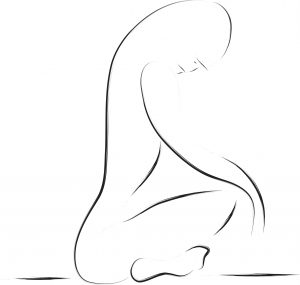 Often, people expect that by the simple intake of the entheogen, mother Ayahuasca will appear and will tell them exactly what to do with their lives or reveal the secrets of the Universe. This idea brings the participant’s attention outside themselves and to the ego. Throughout the experience with the entheogen, participants can amplify and re enforce the false idea they have of themselves and can create more confusion than healing. This is where a guide/therapist/shaman is needed, in order to have a better chance of not getting lost inside illusions and conclusions of the ego.
Often, people expect that by the simple intake of the entheogen, mother Ayahuasca will appear and will tell them exactly what to do with their lives or reveal the secrets of the Universe. This idea brings the participant’s attention outside themselves and to the ego. Throughout the experience with the entheogen, participants can amplify and re enforce the false idea they have of themselves and can create more confusion than healing. This is where a guide/therapist/shaman is needed, in order to have a better chance of not getting lost inside illusions and conclusions of the ego.
Silence is one of the most fundamental ingredients before/during/after a session. The healing process should be structured to promote as much silence as possible, avoiding big group interactions and activities that create noise and distractions.
Attention/Privacy
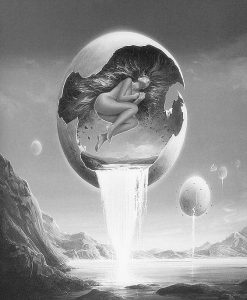 The caring of participants during this type of healing processes is similar to the welfare that is given in intensive care at hospitals. After an experience with entheogens, most participants end up open hearted, making them more sensible and receptive to external energies. Most people carry huge emotional baggage and once that door is open, a flood of thoughts and feelings will emerge and time will be greatly needed to be able to digest all those emotions. This is one of the reasons why long treatments are recommended, or else, after a single experience, the participant may return to the world with their wounds wide open. This often happens with people that attend the few days’ trendy retreats and have no follow up/aftercare from the healing center.
The caring of participants during this type of healing processes is similar to the welfare that is given in intensive care at hospitals. After an experience with entheogens, most participants end up open hearted, making them more sensible and receptive to external energies. Most people carry huge emotional baggage and once that door is open, a flood of thoughts and feelings will emerge and time will be greatly needed to be able to digest all those emotions. This is one of the reasons why long treatments are recommended, or else, after a single experience, the participant may return to the world with their wounds wide open. This often happens with people that attend the few days’ trendy retreats and have no follow up/aftercare from the healing center.
While the participant is opening their subtle body, privacy and isolation comes to be very important. Not only to have a space where they can feel safe to open and resolve their own crisis, but also to not get contaminated by the process of others, that are also letting go of their suffering and purging many things as well.
Contemplation/Rest
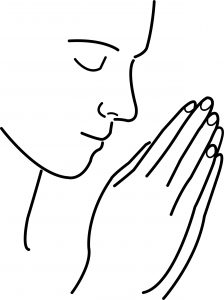 Leaving aside the need to rest the biochemistry of the body in between sessions, people need to have enough space to ponder, contemplate, question, integrate and digest each experience. Usually in serious healing therapies, participants have at least 3 consultations for just one single session. Each consultation can last between 1 to 2 hours, sometimes more. So is fair to say that to serve someone properly, the guide/therapist/shaman needs to invest about 5 to 6 hours in each person that is treating per session. This is the main reason when it comes to healing with entheogens, why is better to be treated inside very small groups of 1 to 3 people per facilitator/guide/shaman at the most.
Leaving aside the need to rest the biochemistry of the body in between sessions, people need to have enough space to ponder, contemplate, question, integrate and digest each experience. Usually in serious healing therapies, participants have at least 3 consultations for just one single session. Each consultation can last between 1 to 2 hours, sometimes more. So is fair to say that to serve someone properly, the guide/therapist/shaman needs to invest about 5 to 6 hours in each person that is treating per session. This is the main reason when it comes to healing with entheogens, why is better to be treated inside very small groups of 1 to 3 people per facilitator/guide/shaman at the most.
Participants need to contemplate each session with enough time to be able to integrate the understandings/insights that received through the experience with the entheogen. A single session properly done usually brings many comprehensions that can still come in the next days or even weeks.
Structure/Effort
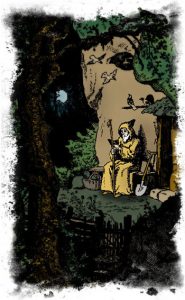 Context is everything. If one is seeking a spiritual experience and a connection to the Divine through the entheogen, that sacred energy has to exist in order to create a space where it can be manifested. Subsequently, that can bring the participant into the sacredness of their own self. This might not be necessary for people that already have established a connection with the divine, but for the majority of people that believe in fairy tales about God, the sacred context is everything.
Context is everything. If one is seeking a spiritual experience and a connection to the Divine through the entheogen, that sacred energy has to exist in order to create a space where it can be manifested. Subsequently, that can bring the participant into the sacredness of their own self. This might not be necessary for people that already have established a connection with the divine, but for the majority of people that believe in fairy tales about God, the sacred context is everything.
The requirements needed in order to have a safe experience become the participant’s inner structure and allows them to build a vessel in which compassion and inspiration can descend upon. The purges before a session, play an important role in the inner structure that the participant is creating. The purge is an offering one places in order to receive compassion. The perception that by paying money for a retreat/ treatment, gives the false idea that one has already given something up and is only there to receive. Everything requires effort and healing requires a lot.
One must be willing to surrender completely in order to reach the truth. This is the surrendering of the attachments and the letting go of everything one knows as real and begin to relearn from the direct experience with the Self.
Expertise/Professionalism
Regardless of choosing to have an experience with a facilitator, a guide, a shaman or just a good friend, it is important to consider their actual knowledge and understanding of treating others and not just their personal experience with the plants or entheogens. Most people guiding sessions around the world these days, have little or no expertise whatsoever guiding healing processes. Most are trying to replicate an experience they’ve had with a certain entheogen, by trying to find the exact measurements, dose, music, chants, and other physical elements that are visible to the basic senses.
Is vital to find an experienced guide that will offer a personalized process if one is seeking to heal from the experience/treatment. Everyone is its own universe and there is no general formula for everyone. The healing process that is required for one person, will never be the same for another, even if they suffer from the same condition and have similar backgrounds.
Feel/Trust
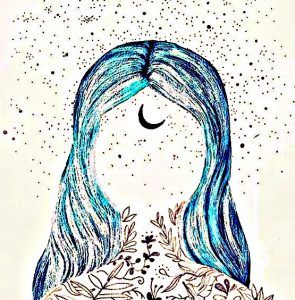 When it comes to choosing where to go for a healing process: One of the most important elements is the feeling/calling towards the place and how aligned one is with the guide’s overall approach towards healing.
When it comes to choosing where to go for a healing process: One of the most important elements is the feeling/calling towards the place and how aligned one is with the guide’s overall approach towards healing.
It’s important that the decision to heal comes from the participant to be able to overcome the obstacles that the logical mind will create during the process, which can create doubt, fear and paralysis.
When it comes to healing: We usually receive what we need, not necessarily what we want. When we follow our intuition regarding where our healing must take place, we also need to acknowledge that the Universe knows exactly what is needed in order to get there.
If the participant has made a decision to heal and has felt the calling towards a certain place, it’s recommendable to complete the entire process regardless any obstacle that may arise. In the worst case scenario, does not heal from the condition, will serve as a stepping stone that will prepare the participant to continue on their next steps towards their own healing journey.
